Volatility, Growth and Financial Crises
This research group analyses the build-up of financial vulnerabilities and real consequences of financial crises. Different policy shocks and the causal reaction of macroeconomic aggregates are identified. Early-warning models describe the cyclical nature of financial vulnerabilities.
IWH Data Project: Financial Stability Indicators in Europe
Research Cluster
Financial Resilience and RegulationYour contact

- Department Macroeconomics
EXTERNAL FUNDING
01.2022 ‐ 12.2023
Sovereign Risk Shocks
05.2017 ‐ 09.2019
Early Warning Models for Systemic Banking Crises: The Effect of Model and Estimation Uncertainty
01.2018 ‐ 12.2018
International Monetary Policy Transmission
Refereed Publications
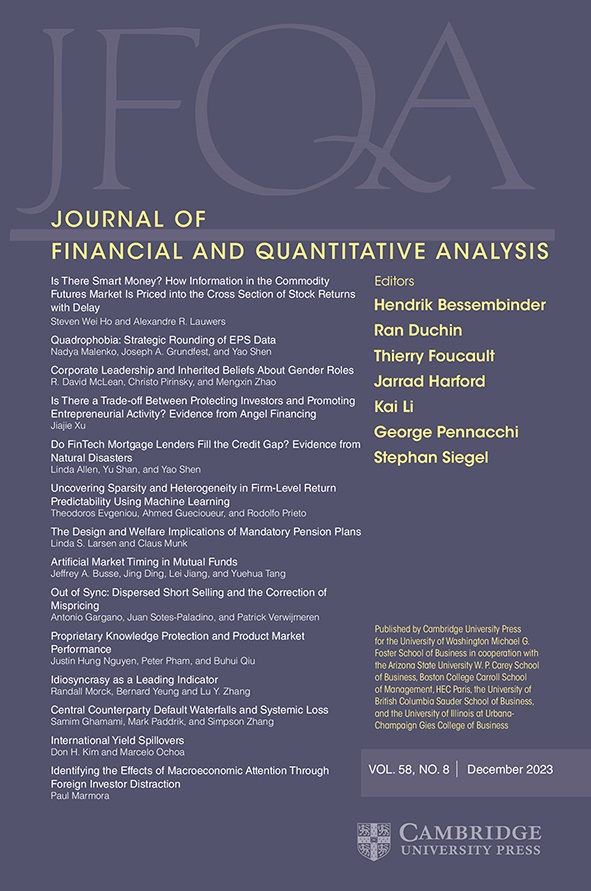
Spillover Effects among Financial Institutions: A State-dependent Sensitivity Value-at-Risk Approach
in: Journal of Financial and Quantitative Analysis, No. 3, 2014
Abstract
In this paper, we develop a state-dependent sensitivity value-at-risk (SDSVaR) approach that enables us to quantify the direction, size, and duration of risk spillovers among financial institutions as a function of the state of financial markets (tranquil, normal, and volatile). For four sets of major financial institutions (commercial banks, investment banks, hedge funds, and insurance companies) we show that while small during normal times, equivalent shocks lead to considerable spillover effects in volatile market periods. Commercial banks and, especially, hedge funds appear to play a major role in the transmission of shocks to other financial institutions.
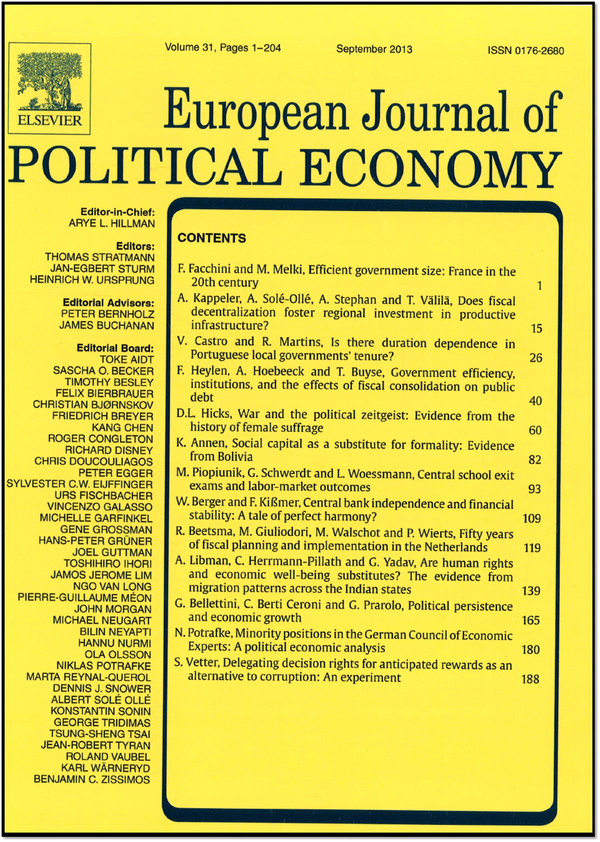
The Impact of Preferences on Early Warning Systems - The Case of the European Commission's Scoreboard
in: European Journal of Political Economy, 2014
Abstract
The European Commission’s Scoreboard of Macroeconomic Imbalances is a rare case of a publicly released early warning system. It allows the preferences of the politicians involved to be analysed with regard to the two potential errors of an early warning system – missing a crisis and issuing a false alarm. These preferences might differ with the institutional setting. Such an analysis is done for the first time in this article for early warning systems in general by using a standard signals approach, including a preference-based optimisation approach, to set thresholds. It is shown that, in general, the thresholds of the Commission’s Scoreboard are set low (resulting in more alarm signals), as compared to a neutral stand. Based on political economy considerations the result could have been expected.

Explosive Preisentwicklung und spekulative Blasen auf Rohstoffmärkten
in: ORDO, No. 64, 2013
Abstract
In dieser Studie wird untersucht, ob die Preisentwicklung auf Rohstoffmärkten statistische Anhaltspunkte für spekulative Preisblasen liefert. Diese Frage ist von zentraler Bedeutung in der wirtschaftspolitischen Debatte um die Regulierung des Handels von Rohstoffen. Es kann statistisch gezeigt werden, dass sich Rohstoffpreise gelegentlich explosiv verhalten. Die stärkste Evidenz für explosives Verhalten gibt es bei den Industrierohstoffen. Auch bei Nahrungsmittelpreisen können Phasen explosiven Verhaltens statistisch nachgewiesen werden. Eine wichtige Schlussfolgerung ist, dass die Ursachen explosiven Verhaltens auf Rohstoffmärkten und die Effekte von Preisblasen auf die Entscheidungen von Konsumenten und Investoren sowie Verteilungseffekte systematisch untersucht werden müssen.

Exchange Rate Regime, Real Misalignment and Currency Crises
in: Economic Modelling, No. 34, 2013
Abstract
Based on 69 sample countries, this paper examines the effect of macroeconomic fundamentals on real effective exchange rates (REER) in these sample countries. Using the misalignment of actual REER from its equilibrium level, we have estimated the factors explaining the extent of currency over- or under-valuation. Overall, we find that the higher the flexibility of the currency regime, the lower is the misalignment. The estimates are robust to different sub-samples of countries. We then explore the impact of such misalignment on the probability of a currency crisis in the next period, indicating the extent to which misalignment could be used as a leading indicator of a potential crisis. This paper thus makes a new contribution to the debate on the choice of exchange rate regime by bringing together real exchange rate misalignment and currency crisis literature.
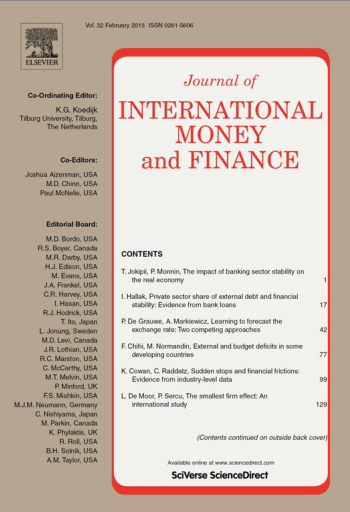
Predicting Financial Crises: The (Statistical) Significance of the Signals Approach
in: Journal of International Money and Finance, No. 35, 2013
Abstract
The signals approach as an early-warning system has been fairly successful in detecting crises, but it has so far failed to gain popularity in the scientific community because it cannot distinguish between randomly achieved in-sample fit and true predictive power. To overcome this obstacle, we test the null hypothesis of no correlation between indicators and crisis probability in three applications of the signals approach to different crisis types. To that end, we propose bootstraps specifically tailored to the characteristics of the respective datasets. We find (1) that previous applications of the signals approach yield economically meaningful results; (2) that composite indicators aggregating information contained in individual indicators add value to the signals approach; and (3) that indicators which are found to be significant in-sample usually perform similarly well out-of-sample.
Working Papers

Risky Oil: It's All in the Tails
in: NBER Working Paper, No. 32524, 2024
Abstract
<p>The substantial fluctuations in oil prices in the wake of the COVID-19 pandemic and the Russian invasion of Ukraine have highlighted the importance of tail events in the global market for crude oil which call for careful risk assessment. In this paper we focus on forecasting tail risks in the oil market by setting up a general empirical framework that allows for flexible predictive distributions of oil prices that can depart from normality. This model, based on Bayesian additive regression trees, remains agnostic on the functional form of the conditional mean relations and assumes that the shocks are driven by a stochastic volatility model. We show that our nonparametric approach improves in terms of tail forecasts upon three competing models: quantile regressions commonly used for studying tail events, the Bayesian VAR with stochastic volatility, and the simple random walk. We illustrate the practical relevance of our new approach by tracking the evolution of predictive densities during three recent economic and geopolitical crisis episodes, by developing consumer and producer distress indices that signal the build-up of upside and downside price risk, and by conducting a risk scenario analysis for 2024.</p>
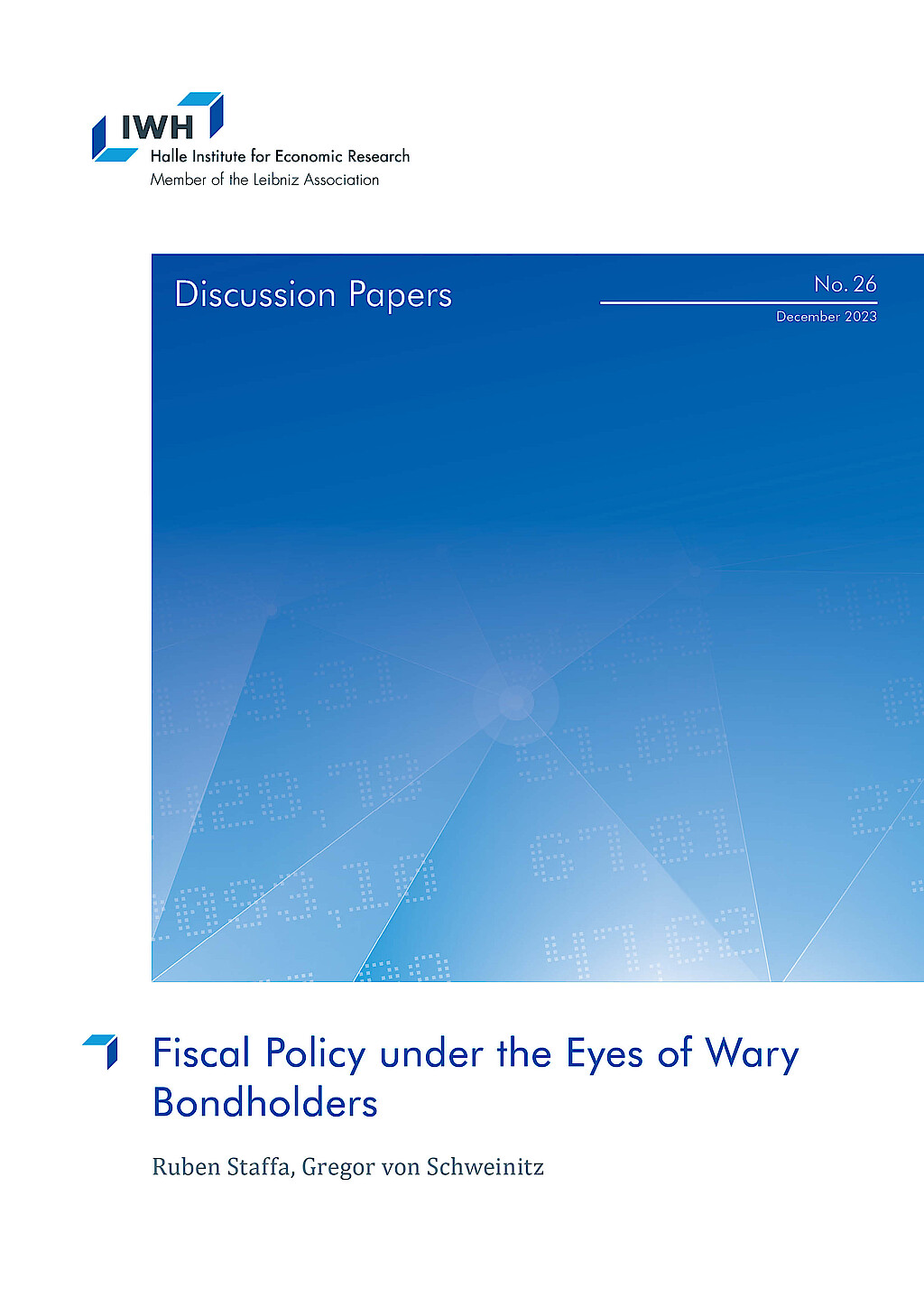
Fiscal Policy under the Eyes of Wary Bondholders
in: IWH Discussion Papers, No. 26, 2023
Abstract
This paper studies the interaction between fiscal policy and bondholders against the backdrop of high sovereign debt levels. For our analysis, we investigate the case of Italy, a country that has dealt with high public debt levels for a long time, using a Bayesian structural VAR model. We extend a canonical three variable macro mode to include a bond market, consisting of a fiscal rule and a bond demand schedule for long-term government bonds. To identify the model in the presence of political uncertainty and forward-looking investors, we derive an external instrument for bond demand shocks from a novel news ticker data set. Our main results are threefold. First, the interaction between fiscal policy and bondholders’ expectations is critical for the evolution of prices. Fiscal policy reinforces contractionary monetary policy through sustained increases in primary surpluses and investors provide incentives for “passive” fiscal policy. Second, investors’ expectations matter for inflation, and we document a Fisherian response of inflation across all maturities in response to a bond demand shock. Third, domestic politics is critical in the determination of bondholders’ expectations and an increase in the perceived riskiness of sovereign debt increases inflation and thus complicates the task of controlling price growth.

Macroeconomic Effects from Sovereign Risk vs. Knightian Uncertainty
in: IWH Discussion Papers, No. 27, 2023
Abstract
This paper compares macroeconomic effects of Knightian uncertainty and risk using policy shocks for the case of Italy. Drawing on the ambiguity literature, I use changes in the bid-ask spread and mid-price of government bonds as distinct measures for uncertainty and risk. The identification exploits the quasi-pessimistic behavior under ambiguity-aversion and the dealer market structure of government bond markets, where dealers must quote both sides of the market. If uncertainty increases, ambiguity-averse dealers will quasi-pessimistically quote higher ask and lower bid prices – increasing the bid-ask spread. In contrast, a pure change in risk shifts the risk-compensating discount factor which is well approximated by the change in bond mid-prices. I evaluate economic effects of the two measures within an instrumental variable local projection framework. The main findings are threefold. First, the resulting shock time series for uncertainty and risk are uncorrelated with each other at the intraday level, however, upon aggregation to monthly level the measures become correlated. Second, uncertainty is an important driver of economic aggregates. Third, macroeconomic effects of risk and uncertainty are similar, except for the response of prices. While sovereign risk raises inflation, uncertainty suppresses price growth – a result which is in line with increased price rigidity under ambiguity.
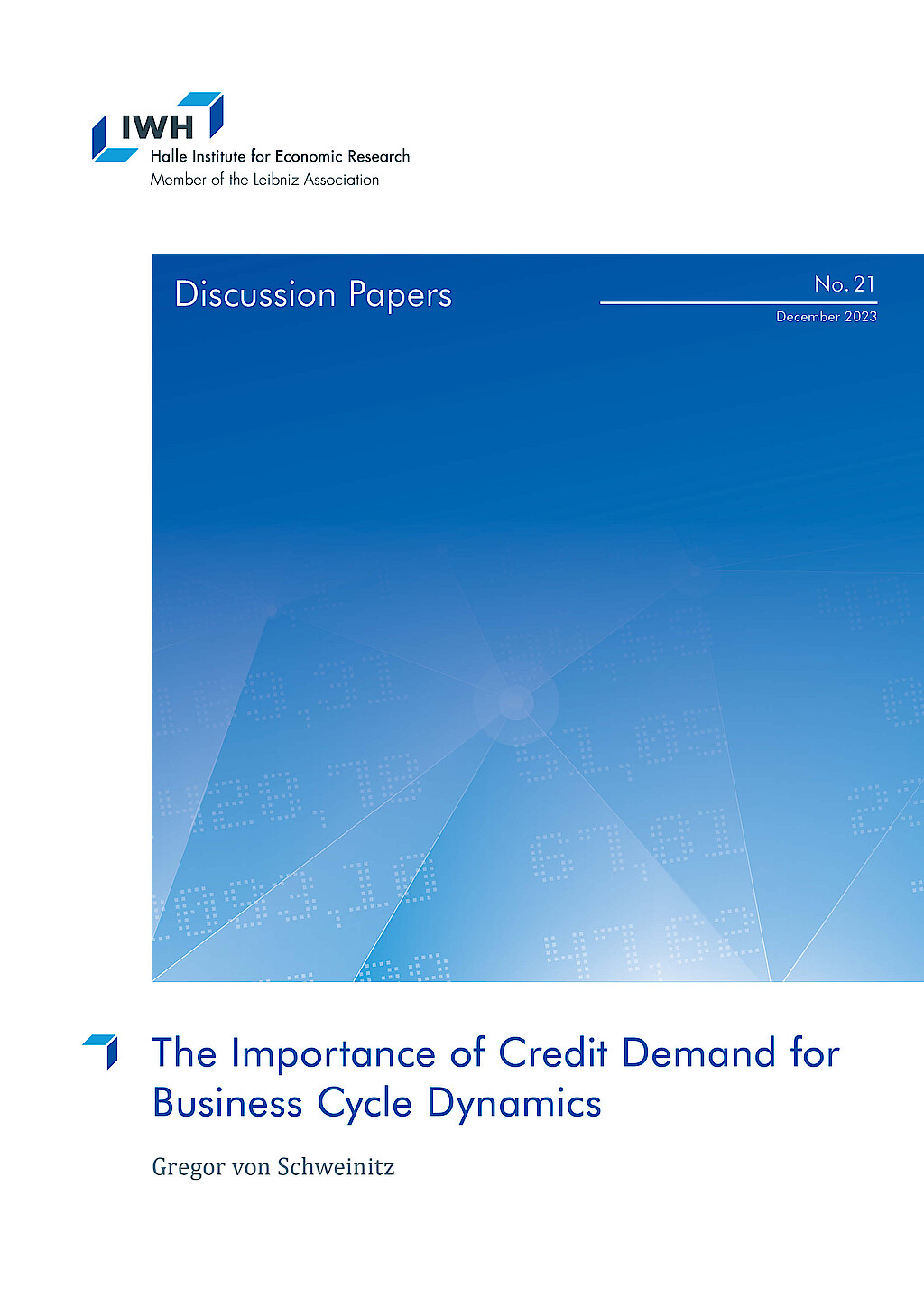
The Importance of Credit Demand for Business Cycle Dynamics
in: IWH Discussion Papers, No. 21, 2023
Abstract
This paper contributes to a better understanding of the important role that credit demand plays for credit markets and aggregate macroeconomic developments as both a source and transmitter of economic shocks. I am the first to identify a structural credit demand equation together with credit supply, aggregate supply, demand and monetary policy in a Bayesian structural VAR. The model combines informative priors on structural coefficients and multiple external instruments to achieve identification. In order to improve identification of the credit demand shocks, I construct a new granular instrument from regional mortgage origination. <br />I find that credit demand is quite elastic with respect to contemporaneous macroeconomic conditions, while credit supply is relatively inelastic. I show that credit supply and demand shocks matter for aggregate fluctuations, albeit at different times: credit demand shocks mostly drove the boom prior to the financial crisis, while credit supply shocks were responsible during and after the crisis itself. In an out-of-sample exercise, I find that the Covid pandemic induced a large expansion of credit demand in 2020Q2, which pushed the US economy towards a sustained recovery and helped to avoid a stagflationary scenario in 2022.

Uncovering Disaggregated Oil Market Dynamics: A Full-Information Approach to Granular Instrumental Variables
in: Working Paper, 2023
Abstract
<p>The world price of oil is determined by the interactions of multiple producers and consumers who face different constraints and shocks. We show how this feature of the oil market can be used to estimate local and global elasticities of supply and demand and provide a rich set of testable restrictions. We develop a novel approach to estimation based on full-information maximum likelihood that generalizes the insights from granular instrumental variables. We conclude that the supply responses of Saudi Arabia and adjustments of inventories have historically played a key role in stabilizing the price of oil. We illustrate how our structural model can be used to analyze how individual producers and consumers would dynamically adapt to a geopolitical event such as a major disruption in the supply of oil from Russia.</p>














